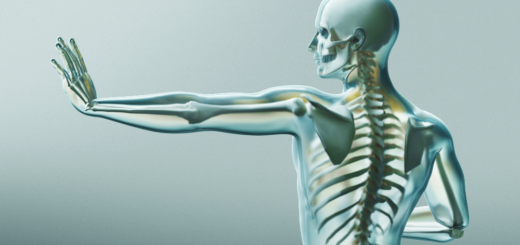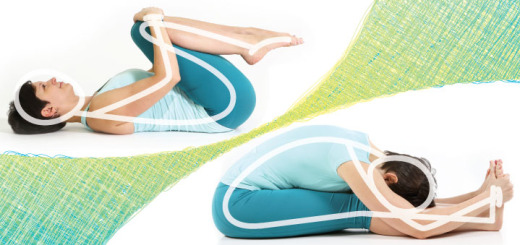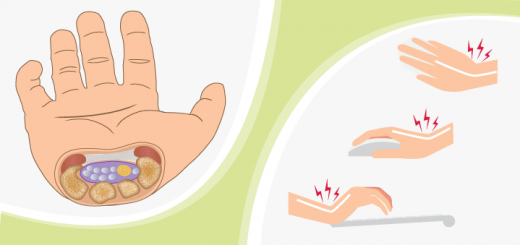“Magic three” yoga poses and how they can make you feel better every day (Part 1).
8Somebody in my yoga therapist training had come up with a term “yoga snack”. No, it doesn’t refer to a power bar or a small bowl of kitchari. Yoga snack is a short, focused yoga practice that you can reach for any time in the course of your day. It’s usually 5-15 min long, helps you feel better overall, and also addresses some pressing issue.
I am a big fan of yoga snacks, both for myself and my students. Since I became a mom, I squeeze my yoga snacks between my clients, on my lunch break, while my son is reading books on the potty :), you get the idea. Some focus on movement, some on breath, some on meditation. Gone are the days when I could luxuriate for an hour or longer each morning – time is precious nowadays. The same applies to my clients. We are all busy. So it’s not realistic to expect somebody to commit to an hour practice every day or even every other day. 5-15 minutes is much more doable. Is it enough? Well, in words of my teacher, Gary Kraftsow: “Doing nothing changes nothing, doing something changes everything.” That is the principle I go by.
Now the question is – what do we put into our yoga snack? Contrary to popular belief, it is not advisable to plop into the pigeon pose without any warning. The yoga snack practice needs to be simple enough to do without any other preparation, versatile enough to be adaptable for a variety of needs and potent enough to make a difference in how we feel.
You might be thinking: “Surya Namaskar! That’s a perfect example of a yoga snack!” For some it is. For many others it isn’t. Sun Salutation is not an easy sequence: the jumping back and forth, Chaturanga, deep forward bend, deep back bend, stress on the shoulders, strong pull on the hamstrings – if your body can do it, you will certainly benefit from it; if not – you can hurt yourself. A friend of mine recently threw her back out after a challenging yoga class. She is a lawyer, a mother of three and an exercise addict – a bit stressed, a bit high-strung, a bit rushed. She could really benefit from yoga, but now refuses to do it. Her one and only experience with a yoga class:” All those Sun Salutations were killing me! Yoga is just too hard” and she is a fit 40-year old! Then what about an older slightly overweight office worker with tight hamstrings and sedentary lifestyle? The point is, Sun Salutation is not your only or the best option. Personally, when I need a yoga snack, I reach for my “magic three” yoga poses.
 My ‘magic three’ yoga poses are not fancy, but they are effective, versatile and potent. Almost anybody can do them and most people would benefit from them. When students ask me at the end of the class: ‘What can I do at home?” I usually say: “Start with the ‘magic three” and we can build on that”. And this is what I do when I feel like I don’t have time/energy/desire to practice. These poses are easily adapted to the needs of the practitioner with a slight change in the position of the arms, feet or head or by using props, like blankets or chair. I am convinced that if more people practiced just those three poses, we would have much fewer instances of back pain and neck tension.
My ‘magic three’ yoga poses are not fancy, but they are effective, versatile and potent. Almost anybody can do them and most people would benefit from them. When students ask me at the end of the class: ‘What can I do at home?” I usually say: “Start with the ‘magic three” and we can build on that”. And this is what I do when I feel like I don’t have time/energy/desire to practice. These poses are easily adapted to the needs of the practitioner with a slight change in the position of the arms, feet or head or by using props, like blankets or chair. I am convinced that if more people practiced just those three poses, we would have much fewer instances of back pain and neck tension.
Within the next few days I will introduce you to my “magic three” yoga poses. We will discuss what makes them so magic and how we can use them for different purposes. I will also give you three sample practices composed mostly of those three poses and their variations:
1. A general “magic three” yoga practice
2. Lower back practice to relieve tension, develop strength and increase stability
3. “Magic three” on the chair practice
Choose to “Follow” this blog to get those in a timely manner.
If you are a member of Sequence Wiz, you will get three additional practices:
1. Upper back/neck practice to relieve tension and increase range of motion
2. “Rise and shine” practice to help you wake up in the morning
3. “Magic three” in preparation for meditation
How’s that for versatility?
But before we get to that, please pause for a moment and reflect: What are your “magic three” poses? Which ones do you reach for most often? What do they do for you? Please feel free to share!




















I do this too, but now I have a name for it. Thanks. My three/four (yoga snack) are apanasana, twist, repeat apanasana and ending with bridge. Or apanasana, twist, vjarasana, bujangasana, cakravakasana, bridge-this is my morning get up and go sequence.
Awesome Sharon, thanks for sharing!
Because it’s hard to make a magic 3 that will work for everyone, I find that a mix of either of these three: apanasana, chakra bhakasana and vajrasana, together with either something that helps open the chest/strengthen erectors, and/or something that creates motion of arm and neck (trikonasana viniyoga style) are usually my “magic 3” depending on the person…
What is chakra bhakasana? A very funny combination.. Bakasana is the crane pose, surely not a viniyoga snack (it’s balancing on hands with bent knees in the air). I assume you mean chakravakasana which is our uncat cow pose or ruddy goose pose in the translation (nobody has seen a ruddy goose in my classes).
Gaby Kende
That’s funny Gaby! I am sure he meant chakravakasana… Can you imagine crane pose in a circle? 🙂
I can chakravakansana, bujangasana, apanasana, dvi padapitham, and jathara parivrtti are my five go-tos. Most of them get used in any class I teach (though not in the above order, necessarily). I also do an entire yoga snack for the neck, shoulder and upper back just lying on the back with the knees up and working with variations of dvi padapitham (not necessarily even lifting) – I discovered I can release a trigger point in my shoulder doing this particular snack so I partake of it whenever the need arises.
Love seeing so many AVI alum faces in the comments 🙂
[…] Let’s review: We are looking for three yoga poses that are simple enough to do without any other preparation, versatile enough to be adaptable for a variety of needs and potent enough to make a difference in how we feel. (Read Part 1 of this post) […]
hello,
I am interested in the practices mentioned above
2. Lower back practice to relieve tension, develop strength and increase stability
3. “Magic three” on the chair practice
Thank you!